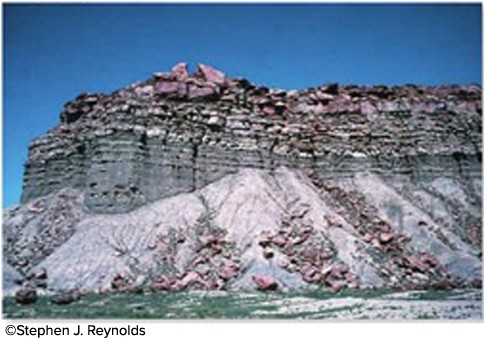What is surface erosion and what role does it play in moving weathered materials?
What will be an ideal response?
Answer: Soil surface erosion occurs when heavy rains cause excess water to flow across the surface, or when high winds blow on bare ground. Water and wind erosion are accelerated when the soil surface is exposed.
The most common form of soil erosion is caused by rainfall. Intense rain sometimes falls faster than soil can absorb it. Water that cannot soak into the ground must run off the surface as overland flow. As it runs off the surface, water picks up soil particles and carries them down the slope. With enough of this overland flow, water can carve channels, the smallest of which are called Rills.
Surface erosion by water is relatively slow in many natural environments where the ground is covered by grass, trees, and other vegetation. But on large parts of Earth's surface, humans have removed vegetation by clearing forests and plowing fields. Once the vegetative ground cover is removed, slow surface erosion can increase, to become Accelerated Erosion. Ground where vegetation has been removed can suffer more surface erosion in a few months than it experienced during the previous several thousand years. Deforestation is a major source of accelerated erosion.
You might also like to view...
The air inside a room is at a temperature of 18.3°C and has a mixing ratio of 5.2 g/kg. If the mixing ratio remains the same, but the temperature of the room increases to 26.7°C, what is the new relative humidity?
What will be an ideal response? __________ %
The contact between the shale, which dominates the bottom part of this sedimentary sequence, and the sandstone, which dominates the upper part, is best described as
A. blurry. B. sharp. C. gradational.
Lunar tides are larger than solar tides.
Answer the following statement true (T) or false (F)
Which of the following combinations make for the best groundwater reservoir?
A. high permeability and low porosity B. high permeability and high porosity C. low permeability and high porosity D. low permeability and low porosity